-
 Bitcoin
Bitcoin $87,985.5737
0.72% -
 Ethereum
Ethereum $1,574.8026
-3.90% -
 Tether USDt
Tether USDt $0.9999
0.00% -
 XRP
XRP $2.0783
-1.83% -
 BNB
BNB $600.4630
-0.57% -
 Solana
Solana $138.7268
-1.43% -
 USDC
USDC $1.0000
0.00% -
 Dogecoin
Dogecoin $0.1604
-0.49% -
 TRON
TRON $0.2468
0.93% -
 Cardano
Cardano $0.6232
-2.68% -
 Chainlink
Chainlink $13.0447
-3.65% -
 UNUS SED LEO
UNUS SED LEO $9.1903
-2.36% -
 Avalanche
Avalanche $19.7884
-0.95% -
 Stellar
Stellar $0.2455
-2.64% -
 Toncoin
Toncoin $2.9136
-3.77% -
 Shiba Inu
Shiba Inu $0.0...01234
-3.12% -
 Sui
Sui $2.2351
0.79% -
 Hedera
Hedera $0.1701
-0.34% -
 Bitcoin Cash
Bitcoin Cash $343.8870
1.52% -
 Hyperliquid
Hyperliquid $18.4355
1.81% -
 Litecoin
Litecoin $78.5146
-0.23% -
 Polkadot
Polkadot $3.7235
-4.61% -
 Dai
Dai $1.0000
0.00% -
 Bitget Token
Bitget Token $4.4307
-2.55% -
 Ethena USDe
Ethena USDe $0.9992
-0.01% -
 Pi
Pi $0.6322
-0.72% -
 Monero
Monero $215.4354
-0.09% -
 Pepe
Pepe $0.0...07934
0.95% -
 Uniswap
Uniswap $5.2398
-3.49% -
 OKB
OKB $50.8827
-0.49%
How does Ethereum spot trading deal with black swan events?
Ethereum's decentralized structure offers resilience against black swan events, but liquidity shortages, smart contract vulnerabilities, regulatory uncertainty, and herd behavior can still cause significant price drops; robust risk management is crucial.
Feb 28, 2025 at 07:54 am
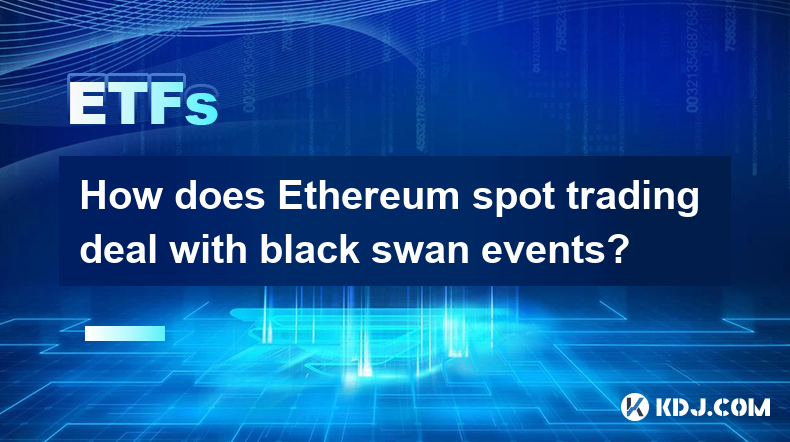
How Does Ethereum Spot Trading Deal with Black Swan Events?
Key Points:
- Ethereum's decentralized nature offers some resilience against black swan events, but it's not immune.
- Liquidity plays a crucial role in weathering market shocks; its impact on price discovery and order execution is examined.
- Smart contract vulnerabilities and exploits can trigger unforeseen price crashes, necessitating robust auditing and security measures.
- Regulatory uncertainty and governmental actions can significantly impact Ethereum's price and trading activity.
- Psychological factors and herd behavior among traders amplify the impact of black swan events.
- Risk management strategies for individual traders, including diversification, stop-loss orders, and position sizing, are essential.
- Ethereum's Decentralized Nature and Resilience:
Ethereum, unlike centralized exchanges, doesn't rely on a single point of failure. Its decentralized structure, built upon a vast network of nodes, theoretically makes it more resistant to black swan events compared to systems controlled by a single entity. If one node or exchange experiences a problem, the network as a whole is unlikely to collapse. This inherent redundancy contributes to a certain level of resilience. However, this resilience isn't absolute. While a single point of failure is less likely, coordinated attacks targeting the consensus mechanism or widespread network outages due to unforeseen events (like a major internet disruption or a global power grid failure) could still significantly impact Ethereum's functionality and price. Furthermore, the decentralized nature doesn't inherently protect against market manipulation or cascading failures resulting from widespread panic selling. While the network itself may remain operational, the value of ETH can still plummet dramatically during a black swan event. The decentralized governance structure, while promoting transparency and community involvement, can also lead to slower responses to critical situations compared to centrally managed systems. This inherent slower reaction time can sometimes exacerbate the negative effects of unforeseen events. Decentralization mitigates some risks, but it doesn't eliminate them entirely. The complexity of the Ethereum ecosystem, with its vast number of interconnected smart contracts and decentralized applications (dApps), introduces additional vulnerabilities that can amplify the impact of external shocks. A single vulnerability exploited in a widely used smart contract, for instance, could have far-reaching consequences across the entire ecosystem. Thus, while decentralization offers a degree of protection, it's not a complete shield against black swan events. The resilience offered is relative and needs to be considered in the context of the specific nature and magnitude of the event.
- Liquidity and its Impact on Price Discovery and Order Execution:
Liquidity, the ease with which an asset can be bought or sold without significantly impacting its price, plays a pivotal role in how Ethereum spot trading handles black swan events. During periods of extreme market volatility triggered by a black swan event, liquidity often dries up. This occurs because many traders simultaneously attempt to exit their positions, creating a surge in sell orders and a scarcity of buy orders. The resulting imbalance leads to sharp price drops as sellers are forced to accept lower prices to find buyers. This phenomenon is exacerbated by the use of automated trading algorithms (bots) that can trigger cascading sell-offs. Reduced liquidity hinders price discovery, making it difficult to determine the fair market value of ETH. The lack of sufficient buyers can lead to significant slippage, where the actual execution price differs considerably from the expected price. This slippage can result in substantial losses for traders who are attempting to exit their positions quickly. Furthermore, the reduced liquidity can make it challenging for market makers to maintain stable bid-ask spreads, further amplifying price volatility. The impact on order execution is significant, with traders potentially facing delayed or even failed order fills during periods of low liquidity. This inability to execute trades promptly can lead to missed opportunities or amplified losses, depending on the market direction. Therefore, maintaining sufficient liquidity is crucial for mitigating the negative impact of black swan events on Ethereum spot trading. Exchanges and market makers play a crucial role in ensuring sufficient liquidity, but even they can be overwhelmed during extreme market conditions. Strategies like maintaining a diversified portfolio and using limit orders instead of market orders can help traders manage the risk associated with liquidity shortages.
- Smart Contract Vulnerabilities and Exploits:
The Ethereum network relies heavily on smart contracts, which are self-executing contracts with the terms of the agreement directly written into code. While smart contracts offer numerous benefits, they also introduce a vulnerability vector that can significantly impact the Ethereum ecosystem during black swan events. A security flaw in a widely used smart contract could be exploited by malicious actors, potentially leading to the theft of large sums of ETH or the disruption of critical decentralized applications (dApps). Such exploits can trigger cascading effects, causing widespread panic selling and a sharp decline in ETH's price. The decentralized nature of Ethereum doesn't eliminate the risk of smart contract vulnerabilities; rather, it may make it harder to quickly address and contain such vulnerabilities. The lack of a centralized authority to enforce immediate fixes can prolong the negative impact of an exploit. Robust auditing and security measures are crucial to mitigate this risk. Thorough code reviews, penetration testing, and formal verification techniques are essential before deploying smart contracts on the mainnet. Furthermore, the community plays a critical role in identifying and reporting potential vulnerabilities. Bug bounty programs can incentivize security researchers to identify and report flaws before they can be exploited. However, despite the best efforts, unforeseen vulnerabilities can still emerge, and the impact of their exploitation can be amplified during periods of market stress, making them significant black swan events within the Ethereum ecosystem. The consequences of a large-scale exploit can be severe, leading to a loss of confidence in the platform and potentially triggering a broader market downturn.
- Regulatory Uncertainty and Governmental Actions:
Regulatory uncertainty surrounding cryptocurrencies, including Ethereum, represents a major source of potential black swan events. Governments worldwide are still grappling with how to regulate this emerging asset class, leading to a lack of clear legal frameworks. Sudden changes in regulatory policy, such as bans on cryptocurrency trading or increased taxation, can significantly impact the price of ETH and trading activity. Such actions can trigger widespread panic selling and lead to a sharp decline in the value of the cryptocurrency. Governmental actions, beyond direct regulatory changes, can also indirectly impact Ethereum. For instance, actions targeting cryptocurrency exchanges or other related businesses can create uncertainty and reduce market confidence, triggering price volatility. Geopolitical events and international sanctions can also have a significant impact. These events can create uncertainty and fear, leading to a flight to safety and potentially triggering a sell-off in riskier assets like ETH. The lack of a clear regulatory landscape makes it challenging for investors and businesses to assess the risks associated with Ethereum investments. This uncertainty can amplify the impact of unforeseen events, making it harder to predict and mitigate potential losses. Transparency and clear communication from regulatory bodies are crucial to reduce uncertainty and build investor confidence. However, the inherent complexity of the regulatory environment and the evolving nature of the cryptocurrency market make it difficult to guarantee a stable regulatory landscape.
- Psychological Factors and Herd Behavior:
Psychological factors and herd behavior among traders can significantly amplify the impact of black swan events on Ethereum spot trading. Fear, uncertainty, and doubt (FUD) can spread rapidly through online communities and social media, leading to a cascading effect of sell-offs. Traders often react emotionally to news and events, leading to irrational decisions that can exacerbate market volatility. Herd behavior, where traders mimic the actions of others, can further amplify these effects. During periods of extreme market stress, traders may panic and sell their assets without considering the underlying fundamentals, leading to a self-fulfilling prophecy of price declines. This herd mentality can create a vicious cycle, where falling prices trigger more selling, leading to further price declines. The speed and reach of information dissemination through social media and online forums can accelerate these psychological effects, making it difficult to counteract the negative sentiment. Understanding these psychological factors is crucial for managing risk during black swan events. Traders should strive to make rational, data-driven decisions rather than reacting emotionally to market fluctuations. Developing a robust risk management strategy, including position sizing and stop-loss orders, can help mitigate the impact of emotional decision-making. However, the inherent human tendency towards emotional reactions makes it challenging to completely eliminate the influence of psychological factors on trading decisions during periods of market stress.
- Risk Management Strategies for Individual Traders:
Individual traders can employ several strategies to mitigate the impact of black swan events on their Ethereum spot trading activities. These strategies focus on managing risk rather than attempting to predict unpredictable events.
- Diversification: Spreading investments across different assets reduces the impact of a single asset's price decline. Diversifying into other cryptocurrencies, traditional assets, or other investment vehicles can cushion the blow of a black swan event affecting Ethereum. This diversification reduces the concentration risk associated with holding a significant portion of one's portfolio in a single asset.
- Stop-Loss Orders: These orders automatically sell an asset when its price falls below a predetermined level. Stop-loss orders help limit potential losses by automatically exiting a position when the price reaches a level deemed unacceptable. While they cannot prevent losses entirely, they can significantly reduce the magnitude of losses during a sharp price drop. The choice of stop-loss level is crucial and should consider individual risk tolerance and market conditions.
- Position Sizing: This involves carefully determining the amount of capital allocated to each trade. Proper position sizing ensures that a single losing trade doesn't wipe out a significant portion of the trading account. By limiting exposure to each trade, traders can withstand multiple losing trades without facing significant financial distress. Position sizing strategies consider factors such as risk tolerance, the expected volatility of the asset, and the trader's overall capital.
- Hedging: Employing hedging strategies, such as using derivatives like options or futures, can help mitigate potential losses during black swan events. Hedging strategies offset the risk of price movements in one asset by taking an opposing position in a related asset. However, hedging strategies themselves carry risks and require a thorough understanding of the underlying mechanisms.
FAQs:
Q: What is a black swan event in the context of Ethereum spot trading?
A: A black swan event refers to an unpredictable, high-impact event that significantly affects the Ethereum market. These events are characterized by their rarity, their extreme impact, and the tendency for people to rationalize them after the fact with explanations that make them seem less random than they were. Examples could include a major security exploit in a widely used smart contract, a sudden and drastic regulatory change, or a major global economic crisis.
Q: How does Ethereum's decentralization protect against black swan events?
A: Ethereum's decentralized nature offers some resilience by eliminating single points of failure. If one exchange or node fails, the network as a whole is less likely to collapse. However, it doesn't offer complete protection against widespread market panic or systemic issues.
Q: What role does liquidity play in black swan events?
A: Liquidity is crucial. During black swan events, liquidity often dries up, leading to significant price slippage and difficulty executing trades. This exacerbates price volatility and potential losses.
Q: Can smart contract vulnerabilities cause black swan events?
A: Yes, a major exploit in a widely used smart contract can trigger a significant market downturn, representing a black swan event due to its unpredictable nature and substantial impact.
Q: How can regulatory uncertainty create black swan events?
A: Unclear or sudden regulatory changes regarding cryptocurrencies can significantly impact Ethereum's price and trading volume, creating unexpected market shocks.
Q: What psychological factors amplify the impact of black swan events?
A: Fear, uncertainty, doubt (FUD), and herd behavior among traders can accelerate sell-offs and exacerbate price drops during black swan events.
Q: What risk management strategies can individual traders employ?
A: Diversification, stop-loss orders, position sizing, and hedging are essential risk management strategies to mitigate potential losses during black swan events.
Disclaimer:info@kdj.com
The information provided is not trading advice. kdj.com does not assume any responsibility for any investments made based on the information provided in this article. Cryptocurrencies are highly volatile and it is highly recommended that you invest with caution after thorough research!
If you believe that the content used on this website infringes your copyright, please contact us immediately (info@kdj.com) and we will delete it promptly.
- Reserve Protocol's RSR token surges over 13% after Coinbase listing announcement
- 2025-04-22 13:40:11
- Bitcoin (BTC) May Soon Mirror Gold's Price Trajectory, Setting Up a $450,000 Target by Year-End
- 2025-04-22 13:40:11
- PEPE price prediction: Bullish breakout could be the start of a rally
- 2025-04-22 13:35:12
- Pi Network (PI) Price Prediction: Experts Forecast Jump to $5
- 2025-04-22 13:35:12
- 4 Altcoins That Will Explode in 2025: What Web3 ai, XRP, Cardano, and PEPE Are Signaling Now
- 2025-04-22 13:30:12
- Mantra (OM) founder and CEO John Patrick Mullin has started unstaking 150 million of his Mantra (OM) tokens
- 2025-04-22 13:30:12
Related knowledge
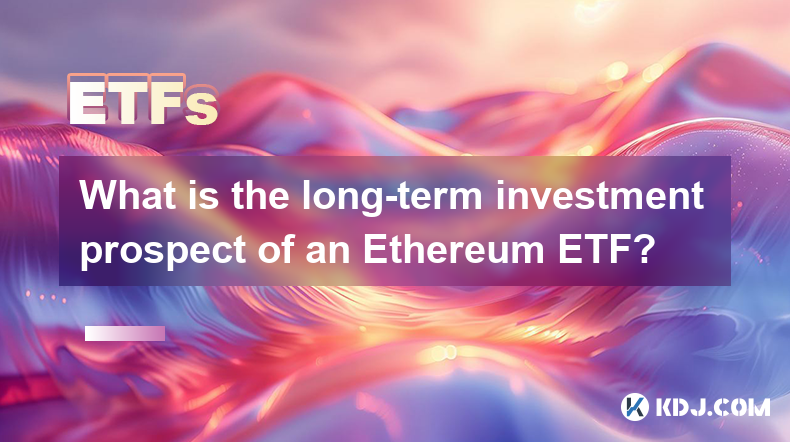
What is the long-term investment prospect of an Ethereum ETF?
Mar 18,2025 at 03:01pm
Key Points:Uncertainty surrounds the long-term prospects of an Ethereum ETF due to regulatory hurdles and market volatility.Approval hinges on regulatory clarity regarding cryptocurrencies, especially concerning investor protection and market manipulation.Successful ETF launches could boost Ethereum's price and adoption, but failure could negatively imp...

What are the channels for purchasing an Ethereum ETF?
Mar 18,2025 at 01:49am
Key Points:Currently, there are no Ethereum ETFs available for direct purchase by the general public in most major markets.Access to Ethereum exposure through ETFs is limited, mainly through futures-based ETFs.Purchasing Ethereum directly or through other investment vehicles remains a viable alternative.Regulatory hurdles and market complexities signifi...
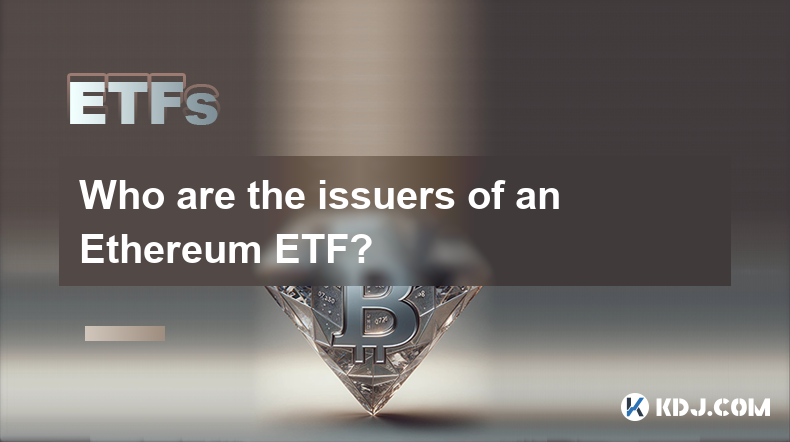
Who are the issuers of an Ethereum ETF?
Mar 19,2025 at 08:07pm
Key Points:There are no currently approved Ethereum ETFs in the US, meaning no single issuer can be definitively named. However, several firms have filed applications.The issuers of potential Ethereum ETFs will be large, established financial institutions, typically asset management companies.The specific requirements for ETF issuers are stringent and o...
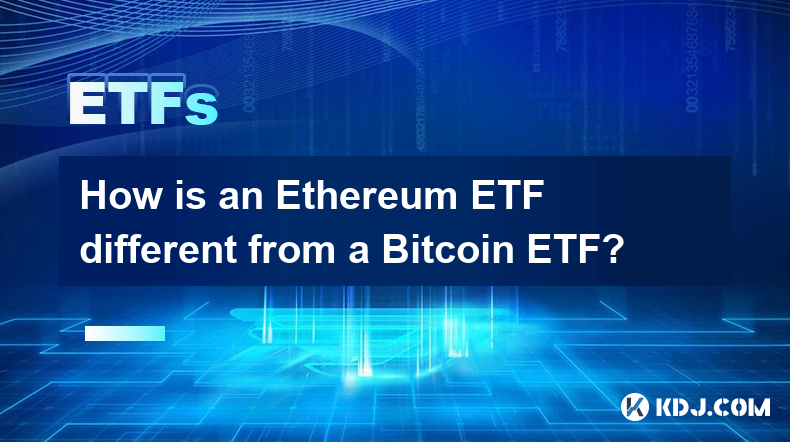
How is an Ethereum ETF different from a Bitcoin ETF?
Mar 17,2025 at 10:55am
Key Points:Underlying Asset: The core difference lies in the underlying asset: an Ethereum ETF tracks the price of Ether (ETH), while a Bitcoin ETF tracks the price of Bitcoin (BTC).Technology and Use Cases: Ethereum's blockchain supports smart contracts and decentralized applications (dApps), creating a distinct technological and investment narrative c...
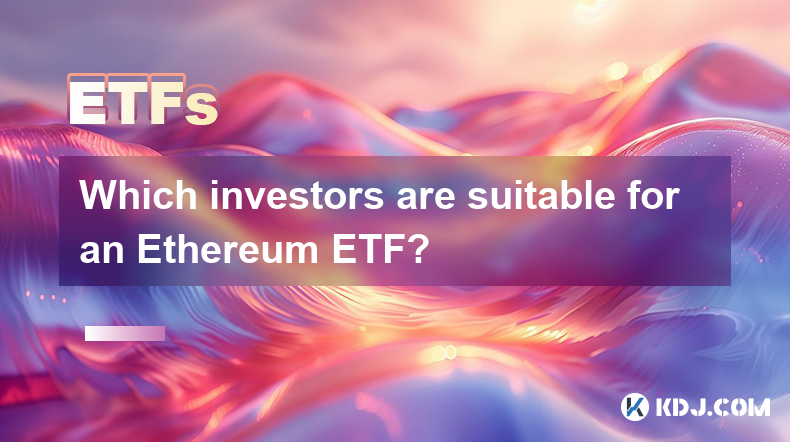
Which investors are suitable for an Ethereum ETF?
Mar 16,2025 at 05:50pm
Key Points:Risk Tolerance: Ethereum ETF investment requires a high risk tolerance due to the volatility of the cryptocurrency market.Investment Goals: Investors seeking long-term growth potential and exposure to the Ethereum ecosystem are suitable candidates.Investment Horizon: A longer-term investment horizon is crucial to weather market fluctuations.U...
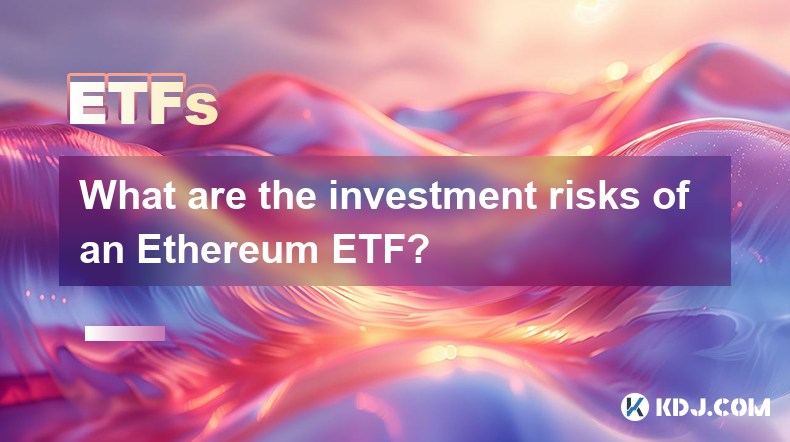
What are the investment risks of an Ethereum ETF?
Mar 18,2025 at 02:12am
Key Points:Price Volatility: Ethereum's price is highly volatile, impacting ETF share prices.Regulatory Uncertainty: Changes in regulatory landscapes can significantly affect ETF trading and performance.Market Manipulation: The potential for market manipulation, particularly in smaller ETFs, exists.Underlying Asset Risk: Risks associated with the Ethere...

What is the long-term investment prospect of an Ethereum ETF?
Mar 18,2025 at 03:01pm
Key Points:Uncertainty surrounds the long-term prospects of an Ethereum ETF due to regulatory hurdles and market volatility.Approval hinges on regulatory clarity regarding cryptocurrencies, especially concerning investor protection and market manipulation.Successful ETF launches could boost Ethereum's price and adoption, but failure could negatively imp...

What are the channels for purchasing an Ethereum ETF?
Mar 18,2025 at 01:49am
Key Points:Currently, there are no Ethereum ETFs available for direct purchase by the general public in most major markets.Access to Ethereum exposure through ETFs is limited, mainly through futures-based ETFs.Purchasing Ethereum directly or through other investment vehicles remains a viable alternative.Regulatory hurdles and market complexities signifi...

Who are the issuers of an Ethereum ETF?
Mar 19,2025 at 08:07pm
Key Points:There are no currently approved Ethereum ETFs in the US, meaning no single issuer can be definitively named. However, several firms have filed applications.The issuers of potential Ethereum ETFs will be large, established financial institutions, typically asset management companies.The specific requirements for ETF issuers are stringent and o...

How is an Ethereum ETF different from a Bitcoin ETF?
Mar 17,2025 at 10:55am
Key Points:Underlying Asset: The core difference lies in the underlying asset: an Ethereum ETF tracks the price of Ether (ETH), while a Bitcoin ETF tracks the price of Bitcoin (BTC).Technology and Use Cases: Ethereum's blockchain supports smart contracts and decentralized applications (dApps), creating a distinct technological and investment narrative c...

Which investors are suitable for an Ethereum ETF?
Mar 16,2025 at 05:50pm
Key Points:Risk Tolerance: Ethereum ETF investment requires a high risk tolerance due to the volatility of the cryptocurrency market.Investment Goals: Investors seeking long-term growth potential and exposure to the Ethereum ecosystem are suitable candidates.Investment Horizon: A longer-term investment horizon is crucial to weather market fluctuations.U...

What are the investment risks of an Ethereum ETF?
Mar 18,2025 at 02:12am
Key Points:Price Volatility: Ethereum's price is highly volatile, impacting ETF share prices.Regulatory Uncertainty: Changes in regulatory landscapes can significantly affect ETF trading and performance.Market Manipulation: The potential for market manipulation, particularly in smaller ETFs, exists.Underlying Asset Risk: Risks associated with the Ethere...
See all articles























































































